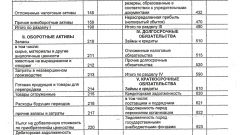Criteria for short-term assets
Short-term assets can be easily converted to cash or used to repay short-term liabilities during the year. Their examples are cash, inventory, invoices for payment of goods and services and other liquid assets. Short-term assets required for the daily operation of the company, they provide a continuous execution of business tasks.
An asset can be recognized as short term only if you meet any of the criteria:
- it should be used within one operating cycle of the company (usually a year);
the asset will be realized during the year after the reporting date;
- it serves for the purpose of sale;
- the asset is cash or equivalents.
Other assets are long term. Unlike long-term assets is that they suggest investments for a longer period and cannot be converted into cash. Examples include land, real estate, investments in equipment. The cost of long-term assets are normally distributed then the number of years during which it will be used.
Classification and types of short-term assets
Traditionally, the following types of short-term assets:
- working capital (in some sources they do not refer to short-term assets and stocks);
- money and their equivalents;
- receivables.
Also, the number of short-term assets include short-term investments and tax assets.
Current assets are divided into two parts. First, it is the objects of labor (raw materials, fuel, etc.) that are completely consumed during production and transfer the cost on finished products. These include animal fattening costs in work in progress. Secondly, it is finished products and goods for resale.
Money is the most liquid asset. The structure of monetary assets include account balances, cash, coins, currency and other cash equivalents include short-term highly liquid investments, with maturities of not more than three months.
According to the degree of liquidity or ability to be sold at the market price there are also highly liquid and illiquid assets.
Accounts receivable is the total amount of funds that rely company from other companies that are their debtors. It occurs when goods are sold, and the debt is not repaid. Refers to the short-term if has a maturity of up to one year.










